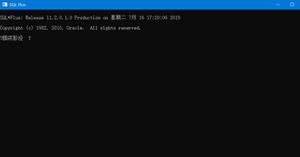PostgreSQL内存表

在某些场景,要求快速的DML,并且对数据可靠性要求不是非常高。
例如游戏的会话信息,传感器上传的最新数据,运算的中间结果,等等。
例如在一个场景中,有非常多的传感器的数据要不断的被更新和查询,可以使用这种方法,每个传感器的ID哈希后分配给对应的会话,这个传感器。
上面的需求,PostgreSQL 临时表都能满足。
但是临时表也存在一定的限制或弊端。
临时表为会话级内存表,跨会话不共享数据和结构,不写REDO。
超过一定大小时会落盘,不是纯内存的。
同时临时表继承了普通表的多版本,但是实际上会话级不需要多版本。
会话断开需要重建临时表结构。
虽然现在的SSD IO能力很强,但是与内存还有一定的插件,同时SSD 擦写次数受限,所以临时表或者普通表难以满足本文开头提到的场景需求。
Oracle 12C 推出列存储内存表,但是它是基于OLAP的应用场景,并不适合本文开头提到的场景。
PostgreSQL 社区也在考虑增加内存表的功能,本文是一个引子,可以看到社区在这方面的努力。
背景
在某些场景,要求快速的DML,并且对数据可靠性要求不是非常高。
例如游戏的会话信息,传感器上传的最新数据,运算的中间结果,等等。
例如在一个场景中,有非常多的传感器的数据要不断的被更新和查询,可以使用这种方法,每个传感器的ID哈希后分配给对应的会话,这个传感器。
上面的需求,PostgreSQL 临时表都能满足。
但是临时表也存在一定的限制或弊端。
临时表为会话级内存表,跨会话不共享数据和结构,不写REDO。
超过一定大小时会落盘,不是纯内存的。
同时临时表继承了普通表的多版本,但是实际上会话级不需要多版本。
会话断开需要重建临时表结构。
虽然现在的SSD IO能力很强,但是与内存还有一定的插件,同时SSD 擦写次数受限,所以临时表或者普通表难以满足本文开头提到的场景需求。
Oracle 12C 推出列存储内存表,但是它是基于OLAP的应用场景,并不适合本文开头提到的场景。
PostgreSQL 社区也在考虑增加内存表的功能,本文是一个引子,可以看到社区在这方面的努力。
PostgreSQL内存表之路
在postgrespro发表的postgres roadmap中,可以看到,他们正在搞热插拔的存储引擎。
https://wiki.postgresql.org/wiki/Postgres_Professional_roadmap
Pluggable storages
We achieved a significant progress in PostgreSQL extendability:FDWs, custom access methods, generic WAL. And we
"re not so far from having pluggable storage engines.Concept of API will be presented at PGCon.
We are planning to implement the following types of storage engines:
In-memory row-oriented storage engine with optional support of transactions and optional support of persistency;
Columnar storage engine;
In-memory columnar storage engine;
On-disk row-oriented storage engine with undo-log for better bloat control.
行式内存引擎、列式内存引擎、列存磁盘存储引擎、以及回滚段模式的行式磁盘存储引擎。
目前还没有看到代码方面的输出,但是在postgrespro的项目里有一个与内存表非常类似的项目,会话级变量。
数据保存在内存中,目前支持如下操作
https://github.com/postgrespro/pg_variables
操作看起来是不是有点像redis呢?
Integer variables
Function Returns
pgv_set_int(package text, name text, value int)
void
pgv_get_int(package text, name text, strict bool default true)
int
Text variables
Function Returns
pgv_set_text(package text, name text, value text)
void
pgv_get_text(package text, name text, strict bool default true)
text
Numeric variables
Function Returns
pgv_set_numeric(package text, name text, value numeric)
void
pgv_get_numeric(package text, name text, strict bool default true)
numeric
Timestamp variables
Function Returns
pgv_set_timestamp(package text, name text, value timestamp)
void
pgv_get_timestamp(package text, name text, strict bool default true)
timestamp
Timestamp with timezone variables
Function Returns
pgv_set_timestamptz(package text, name text, value timestamptz)
void
pgv_get_timestamptz(package text, name text, strict bool default true)
timestamptz
Date variables
Function Returns
pgv_set_date(package text, name text, value date)
void
pgv_get_date(package text, name text, strict bool default true)
date
Jsonb variables
Function Returns
pgv_set_jsonb(package text, name text, value jsonb)
void
pgv_get_jsonb(package text, name text, strict bool default true)
jsonb
同样支持集合哦
Records
The following functions are provided by the module to work with collections of record types.
To use pgv_update(), pgv_delete() and pgv_select() functions required package and variable must exists.
Otherwise the error will be raised.
It is necessary to set variable with pgv_insert() function to use these functions.
pgv_update(), pgv_delete() and pgv_select() functions check the variable type.
If the variable type does not record type the error will be raised.
Function Returns Description
pgv_insert(package text, name text, r record)
void
Inserts a record to the variable collection. If package and variable do not exists they will be created. The first column of r will be a primary key. If exists a record with the same primary key the error will be raised. If this variable collection has other structure the error will be raised.
pgv_update(package text, name text, r record)
boolean
Updates a record with the corresponding primary key (the first column of r is a primary key). Returns true if a record was found. If this variable collection has other structure the error will be raised.
pgv_delete(package text, name text, value anynonarray)
boolean
Deletes a record with the corresponding primary key (the first column of r is a primary key). Returns true if a record was found.
pgv_select(package text, name text)
set of record
Returns the variable collection records.
pgv_select(package text, name text, value anynonarray)
record
Returns the record with the corresponding primary key (the first column of r is a primary key).
pgv_select(package text, name text, value anyarray)
set of record
Returns the variable collection records with the corresponding primary keys (the first column of r is a primary key).
下面更像redis了
Miscellaneous functions
Function Returns Description
pgv_exists(package text, name text)
bool
Returns true if package and variable exists.
pgv_remove(package text, name text)
void
Removes the variable with the corresponding name. Required package and variable must exists, otherwise the error will be raised.
pgv_remove(package text)
void
Removes the package and all package variables with the corresponding name. Required package must exists, otherwise the error will be raised.
pgv_free()
void
Removes all packages and variables.
pgv_list()
table(package text, name text)
Returns set of records of assigned packages and variables.
pgv_stats()
table(package text, used_memory bigint)
Returns list of assigned packages and used memory in bytes.
Note that pgv_stats() works only with the PostgreSQL 9.6 and newer.
目前数据仅支持会话级,会话断开则自动释放,期待真正的内存表引擎吧,这只是个引子。
存储逻辑结构
术语
package : 包名
name : 变量名
value : 标量类型的值
r : 集合类型的单条记录
pk : 集合类型的主键
测试
安装内存表插件
export PATH=/home/digoal/pgsql9.6/bin:$PATHgit clone https:
//github.com/postgrespro/pg_variablescd pg_variables/
make USE_PGXS=1
make USE_PGXS=1install
make USE_PGXS=1 installcheck
postgres=# create extension pg_variables;
CREATE EXTENSION
标量测试
postgres=# select pgv_set_int("pkg1","k1",100);pgv_set_int
-------------(1 row)
postgres=# select pgv_get_int("pkg1","k1");
pgv_get_int
-------------
100
(1 row)
postgres=# select pgv_set_jsonb("pkg1","k2","{"a":"b", "c":{"hello":"digoal"}}");
pgv_set_jsonb
---------------
(1 row)
postgres=# select pgv_get_jsonb("pkg1","k2");
pgv_get_jsonb
--------------------------------------
{"a": "b", "c": {"hello": "digoal"}}
(1 row)
更新与自增用法
postgres=# select pgv_set_int(pkg,k, pgv_get_int(pkg,k)+1 ) from (values ("pkg1","k1")) t(pkg,k);pgv_set_int
-------------(1 row)
postgres=# select pgv_get_int("pkg1","k1");
pgv_get_int
-------------
102
(1 row)
postgres=# select pgv_set_int(pkg,k, pgv_get_int(pkg,k)+1 ) from (values ("pkg1","k1")) t(pkg,k);
pgv_set_int
-------------
(1 row)
postgres=# select pgv_get_int("pkg1","k1");
pgv_get_int
-------------
103
(1 row)
性能,每秒标量更新达到了239万次。
postgres=# selectcount(*) from (select pgv_set_int("pkg1","k1",id) from generate_series(1,10000000) t(id) ) t;count----------
10000000
(1 row)
Time: 4185.179 ms
postgres=# select pgv_get_int("pkg1","k1");
pgv_get_int
-------------
10000000
(1 row)
Time: 0.470 ms
postgres=# select10000000/4.185;
?column?
----------------------
2389486.260454002389
(1 row)
Time: 0.869 ms
集合测试
postgres=# select pgv_insert("pkg2", "k1", row(1::int, "hello world"::text, current_date::date));pgv_insert
------------(1 row)
postgres=# select*from pgv_select("pkg2", "k1") as t(c1 int,c2 text,c3 date);
c1 | c2 | c3
----+-------------+------------
1| hello world |2016-08-18
(1 row)
postgres=# selectcount(*) from (select pgv_insert("pkg2", "k1", row(c1,"test"::text,current_date::date)) from generate_series(2,100000) t(c1)) t;
count
-------
99999
(1 row)
postgres=# select*from pgv_select("pkg2", "k1", array[1,2,3]) as t(c1 int,c2 text,c3 date);
c1 | c2 | c3
----+-------------+------------
1| hello world |2016-08-18
2| test |2016-08-18
3| test |2016-08-18
(3 rows)
内存表和普通表的JOIN
postgres=# select t1.*,t2.*from (select*from pgv_select("pkg2", "k1") as t(c1 int,c2 text,c3 date)) t1, tbl1 t2 where t1.c1=t2.id and t2.id<10;c1
| c2 | c3 | id | info ----+-------------+------------+----+----------------------------------8| test |2016-08-18|8| a8a7e0f849c5895820bbca32d7e798b1
4| test |2016-08-18|4| f6954fb12336881d590fa7a50dd03916
9| test |2016-08-18|9| 45ff843fcd5372e525368829f9846def
5| test |2016-08-18|5| d8afe53f0a7d553716caa9ffaef7ea3d
7| test |2016-08-18|7| 2b20f485974500d7b3ecb1f4c1d0f975
2| test |2016-08-18|2| 3d36418926b2e0e2dc7090da17e39451
6| test |2016-08-18|6| 6923416bbca7634f01f7f79030609f64
1| hello world |2016-08-18|1| 3bb6c833f1b10139edf7e2f2eb4f4a69
3| test |2016-08-18|3| de5b51374e1db3ccac9c61af75b69a33
(9 rows)
更新与删除内存表的数据
postgres=# select pgv_update("pkg2", "k1", t) from (select c1,"new val"::text,"2017-01-01"::date from pgv_select("pkg2", "k1", 1) as tb(c1 int, c2 text, c3 date)) t;pgv_update
------------t
(1 row)
Time: 0.665 ms
postgres=# select*from pgv_select("pkg2", "k1", 1) as tb(c1 int, c2 text, c3 date);
c1 | c2 | c3
----+---------+------------
1| new val |2017-01-01
(1 row)
Time: 0.518 ms
postgres=# select pgv_delete("pkg2", "k1", 1);
pgv_delete
------------
t
(1 row)
Time: 0.440 ms
管理内存对象
postgres=# select*from pgv_exists("pkg1","k1");pgv_exists
------------f
(1 row)
Time: 0.491 ms
postgres=# select pgv_list();
pgv_list
-----------
(pkg2,k1)
(1 row)
Time: 0.455 ms
postgres=# select pgv_stats();
pgv_stats
-----------------
(pkg2,16785408)
(1 row)
Time: 0.514 ms
postgres=# select pgv_remove("pkg2","k1");
pgv_remove
------------
(1 row)
Time: 1.868 ms
postgres=# select pgv_stats();
pgv_stats
--------------
(pkg2,24576)
(1 row)
Time: 0.367 ms
postgres=# select pgv_remove("pkg2");
pgv_remove
------------
(1 row)
Time: 0.415 ms
postgres=# select pgv_stats();
pgv_stats
-----------
(0 rows)
Time: 0.369 ms
数据持久化
postgres=# selectcount(*) from (select pgv_insert("pkg2", "k1", row(c1,"test"::text,current_date::date)) from generate_series(2,10000000) t(c1)) t;count---------
9999999
(1 row)
在事务中持久化数据
postgres=# begin;
postgres=# createtable tbl asselect*from pgv_select("pkg2","k1") as t(c1 int, c2 text, c3 date);
postgres=# end;
postgres=# selectcount(*) from tbl;
count
---------
9999999
(1 row)
PostgreSQL 内存表
本文来自云海天,作者:古道轻风,转载请注明原文链接:https://www.cnblogs.com/88223100/p/PostgreSQL_Memory_Table.html
以上是 PostgreSQL内存表 的全部内容, 来源链接: utcz.com/z/536084.html






